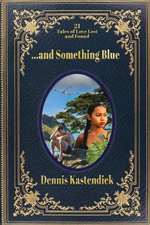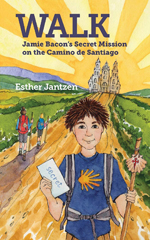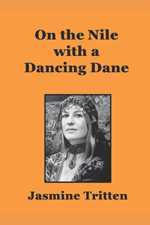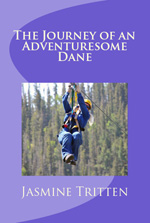Author Neill McKee is a world wanderer from Southern Ontario, Canada, who now makes his home in Albuquerque, New Mexico. Following the release of his award-winning Finding Myself in Borneo (2019), he published a second travel memoir in 2020, Guns and Gods in My Genes: A 15,000-mile North American Search Through Four Centuries of History, to the Mayflower. You’ll find Neill on Facebook, Twitter, and LinkedIn, as well as his website NeillMckeeAuthor.com. Read his 2019 SWW interview to learn about his first memoir.
 What would you like readers to know about your newest book?
What would you like readers to know about your newest book?
My travel memoir starts in 2017 in Ontario, Canada, as I uncover the stories of my rather religious McKee Scots-Irish ancestors in Canada (Chapters 1 to 3). In Chapter 4, I follow the trail of my maternal grandfather, John Addison Neill (my given name is my mother’s maiden name), who enters the USA in 1899, becomes a Methodist minister, and marries a woman in Wisconsin by the name of Effie Jane Haskins. Chapters 5 to 7 are about my grandparents’ adventures as they move west to Nebraska and Wyoming, still very much a part of the Wild West during 1895-1907. The remainder of the book (Chapters 8 to 17) takes the reader deeper into North American history as I discover the stories of my great-grandfather, Lafayette Haskins, in the Civil War. Other ancestors fought in the American Revolution, The French and Indian War, and King Philip’s War, which involved a bloody struggle between some of my Puritan ancestors in New England and the Native Americans they displaced, enslaved, indentured, or killed. Throughout the book, I compare American and Canadian early settlement, the role of religion, wars, the rule of law, and gun control.
What sets this book apart from other travel memoirs?
Many people search for their roots on Ancestry.com or other websites, and in libraries. Often, they end up with pages of family trees, which may be of interest to a few cousins but make most others’ eyes glaze over. I took a different approach and traveled to the places my ancestors lived, farmed, struggled, fought, and prayed, so that I could meet distant cousins, uncover new stories, take photos, and gain insights on the memoir’s theme: the conflict between guns and gods in my genes. I also had a personal challenge to answer that adds some tension: Should I, a peaceful Canadian writer in his 70s living in New Mexico, also become a citizen of gun-happy USA? Throughout the book I use vivid descriptions, historical analysis with some of my own interpretations, dialog, accounts of on-the-spot detective work, lyrical prose, uncovered ancient poems (and one of my own on a “Rowdy Man” ancestor in Connecticut), and 116 photos and illustrations. The pages are unencumbered by tables and chapter notes, which are placed at the back.
When did you know you wanted to write this second memoir?
During my 45-year career in international development, I lacked the time to properly write the stories of my adventures in Asia, Africa, Latin America, the Caribbean, and more recently Russia. After I retired in 2012, I began writing Finding Myself in Borneo, the story of my first job after university. (It has won three awards and gained over 25 five-star reviews.) Simultaneously, during 2013-15, I visited my aging mother in Ontario, traveling from my home in Maryland a few times a year. My dad, who died in 2007, was always interested in old family history but never had the time nor the skills to do much research or writing. I discovered the beginnings of interesting stories in his old files, and I reached out to cousins, one living uncle, and three remaining aunts. I found many leads on both sides of the family and interviewed family members in person, picking up more stories, photos, and records. That’s when I knew I had another book to write. Also, by getting my DNA tested on Ancestry.com, I matched with distant cousins who had additional stories, records, and photos.
What unique challenges did this work pose for you?
I had to verify some genealogical links, which, with my own skills in genealogy research, proved challenging. So, I hired researchers at the New England Historical Genealogical Society (NEHGS), Boston, to do the refined work. I tracked down all the birth, marriage, and death certificates I could find, but NEHGS found some missing links and submitted my application to the General Society of Mayflower Descendants, Plymouth, Massachusetts, and it was accepted. I also visited the Mayflower Society in Plymouth for help in verifying other New England ancestors of interest — many through female lineage.
Tell us more about how the book came together.
When I began the genealogical search on the Canadian side of my family in 2013, I only had a few records and stories from my father and cousins, but did extensive interviews with my only living uncle. On the US side, I had quite a few leads from a now-deceased cousin to whom I dedicated the book. These were anecdotes, website stories, etc. and a lot from Ancestry.com and other records. My cousin had done a great job, and between 2013 and 2015, I put these all together in two 200-page documents — one on my paternal side and one on my maternal side. They are more traditional genealogical accounts and, although I knew they would be interesting to my extended family, I wanted to write the story of our ancestors in a way that would be of interest to a much wider audience.
In 2015, after my wife and I settled in Albuquerque, I began writing stories for the book. That year, I also joined a graduate workshop in creative nonfiction led by Professor Diane Thiel at the Department of English, University of New Mexico. At the same time, I worked on Finding Myself in Borneo, and some of my submissions were on that subject. The feedback I received in these sessions was invaluable. I joined Professor Thiel’s 2016 workshop on writing poetry, as well, and also attended SWW workshops, which helped with both books.
For Guns and Gods in My Genes, I carried out the real travel research during the summers of 2017 to 2019, when I clocked 15,000 miles through Ontario and 22 US states. Besides going to the very places where my ancestors lived and died, I visited many historical museums and societies to dig up more facts and stories, and to uncover mistakes other amateur genealogists (like myself) had made and put on Ancestry.com. The receptions I received from local historians and museum curators were overwhelmingly positive.
 Who are a few favorite “characters” you discovered from among your ancestors?
Who are a few favorite “characters” you discovered from among your ancestors?
By following female lineage (Neill/Haskins or Hoskins, Robinson, Stevens, Gallop, Thacher, Conant, Fuller), I found real rascals and Indian fighters, as well as some fair and saintly people in my genes. For instance, Reverend Thomas Thacher, first pastor of the Old South Boston Meeting House, was a reformist and “Renaissance Man.” And Roger Conant, founder of Salem, Massachusetts, argued against the increasingly fanatical Puritans — people who brought us the infamous Salem Witch Trials. I also take readers into the foundations of, and myths about, the Puritan Pilgrims and their worldview through two visits to the recreation of “Plimoth” Plantation, Plymouth, MA. There I meet and humorously dialog with educator-actors playing the roles of real Pilgrims such as Samuel Fuller, the colony’s quack doctor and brother of my ninth great-grandfather, Edward Fuller, who came on the Mayflower with his unnamed wife in 1620. (They died in the first winter, but I descend from his son who came to New England in 1640.)
What was the most rewarding aspect of putting this project together?
The discovery through travel was the most rewarding, especially meeting like-minded people with a similar interest in preserving and documenting history. For instance, when I met the people who own the great Haskins house in Windsor, Connecticut, built in 1750, they immediately welcomed me and showed me all around the property, telling me more stories about the place. My former training in communication research helped me uncover myths and mistakes people make by not checking and triangulating facts. In my memoir, I document how this happens and how to avoid it. I also loved listening to many books on US and Canadian history, usually while walking and making notes. I have a pretty full library and, besides the 21 pages of chapter notes, I include a suggested reading list at the end of the book.
Any “Oh, wow!” moments when doing research for this book?
There are many “wow! moments” in my book. Here are two:
- On top of a hill in Virginia I walk along still-visible trenches used by Confederate soldiers in the Battle of the Wilderness (May 5-6, 1864). I then take an eerie walk down the hill into the woods where my great-grandfather, Lafayette Haskins, a 20-year-old foot soldier in the 7th Wisconsin Regiment (a part of the famous Iron Brigade) received a gunshot in the leg from the Confederate trenches above. (This was his last battle of his two years in the war. He had also endured more dangerous episodes of sickness in rudimentary, unsanitary hospitals.)
- Through perseverance, I keep asking locals in a small town in western New York, if they know possible descendants of my Stevens ancestor who fought in the American Revolution. The clues I gather finally lead me to an 82-year-old flower farmer who, 25 years ago, had researched his whole ancestry through 25 generations and documented it all in a thick binder. He invited me in for a cup of coffee and a long chat, and this distant cousin and I still keep in touch.
Do you have a favorite quote from Guns and Gods in My Genes?
Here is a short lyrical prose piece from Chapter 6 (“Reverend Neill in the Aftermath of Wounded Knee”), when my maternal grandparents lived in Nebraska during 1904-05. It demonstrates how slim a chance any of us have of being born:
The Prince Albert Suit Coat, 1905: My grandpa Neill, a Methodist pastor, preached one Sunday morning in Rushville, Nebraska, then left for his other churches, 20 miles away. Warmed by a buffalo coat, he drove his sleigh pulled by Indian ponies through drifting snow, arriving in time for evensong. Realizing he’d forgotten his Prince Albert suit coat, with two more sermons to preach on Monday, back he and his ponies went in the cold calm moonlight. Opening the door, he found the house so still, his family breathing in deadly vapors. Grandma had dampened down the coal stove too soon. But Grandpa pulled her and their four children outside — all saved by love for that coat, his mysterious pride.
When writing memoir, is a writer’s responsibility to the truth of the facts or to his perception/feelings about what occurred?
I believe a memoir writer must pay attention to both truth and perceptions/feelings. It is even more important to follow the facts carefully in writing a historical memoir like this, where much has been written about the time and places in which the writer’s ancestors lived. I did extensive research and reading on North American history. But obviously my background, education, perceptions, political leaning, and temperament determined some interpretations in creative nonfiction. If these factors did not play a part in what I wrote, the book would have turned out as a dry piece of academic writing, possibly of interest to a few historians and genealogists only. I hired Pamela Yenser, SWW member, as my literary editor for this book (as well as my Borneo book). She helped a lot with methods of marrying facts and creativity. I tried to rise to the challenge of writing a book which would have wider appeal in both Canada and the US.
What writing projects are you working on now?
I have simultaneously been writing a memoir about my own beginnings in Ontario, Canada, which incorporates some of the stories that are not used in Guns and Gods in My Genes. It also connects with my Borneo memoir. It is presently being sent out for reactions and pre-publication reviews. Here is a brief write-up:
Kid on the Go! Memoir of my life before Borneo is Neill McKee’s third work in creative nonfiction. It is a prequel to his first work in the genre, the award-winning Finding Myself in Borneo: Sojourns in Sabah. In this short book, McKee takes readers on a journey through his childhood, early adolescence, and teenage years, while growing up in the small industrially polluted town of Elmira in Southern Ontario, Canada — now infamous as one of the centers for production of Agent Orange during the Vietnam War. Each chapter is set to a different theme on how he learned to keep “on the go.” McKee’s vivid descriptions, dialog and self-drawn illustrations provide much humor and poignant moments in his stories of growing up in a loving family. In a way, the book is a travel memoir through both mental and physical space — a study of a young boy’s learning to observe and avoid dangers; to cope with death in the family; to fish, hunt, play cowboys; to learn the value of work and how to build and repair “escape” vehicles. The memoir explores his experiences with exploding hormones, his first attraction to girls, dealing with bullying, how he rebelled against religion and authority and survived the conformist teenager rock-and-roll culture of the early 1960s, coming out the other side with the help of influential teachers and mentors. After finally leaving his hometown, McKee describes his rather directionless but intensely searching years at university. Except for an emotional afterword and revealing postscript, the story ends when he departs to become a volunteer teacher on the Island of Borneo — truly a “kid on the go!”
 KL Wagoner (writing as Cate Macabe) is the author of This New Mountain: a memoir of AJ Jackson, private investigator, repossessor, and grandmother. Kathy posts to a speculative fiction blog at klwagoner.com and writes about memoir at ThisNewMountain.com.
KL Wagoner (writing as Cate Macabe) is the author of This New Mountain: a memoir of AJ Jackson, private investigator, repossessor, and grandmother. Kathy posts to a speculative fiction blog at klwagoner.com and writes about memoir at ThisNewMountain.com.
 What would you like readers to know about Destiny Strikes Twice?
What would you like readers to know about Destiny Strikes Twice?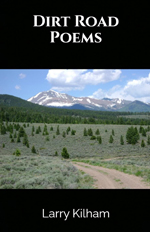 You’re also a poet. Do you think writing poetry has helped you become a better writer overall?
You’re also a poet. Do you think writing poetry has helped you become a better writer overall? KL Wagoner (writing as Cate Macabe) is the author of This New Mountain: a memoir of AJ Jackson, private investigator, repossessor, and grandmother. Kathy posts to a speculative fiction blog at klwagoner.com and writes about memoir at ThisNewMountain.com.
KL Wagoner (writing as Cate Macabe) is the author of This New Mountain: a memoir of AJ Jackson, private investigator, repossessor, and grandmother. Kathy posts to a speculative fiction blog at klwagoner.com and writes about memoir at ThisNewMountain.com.








